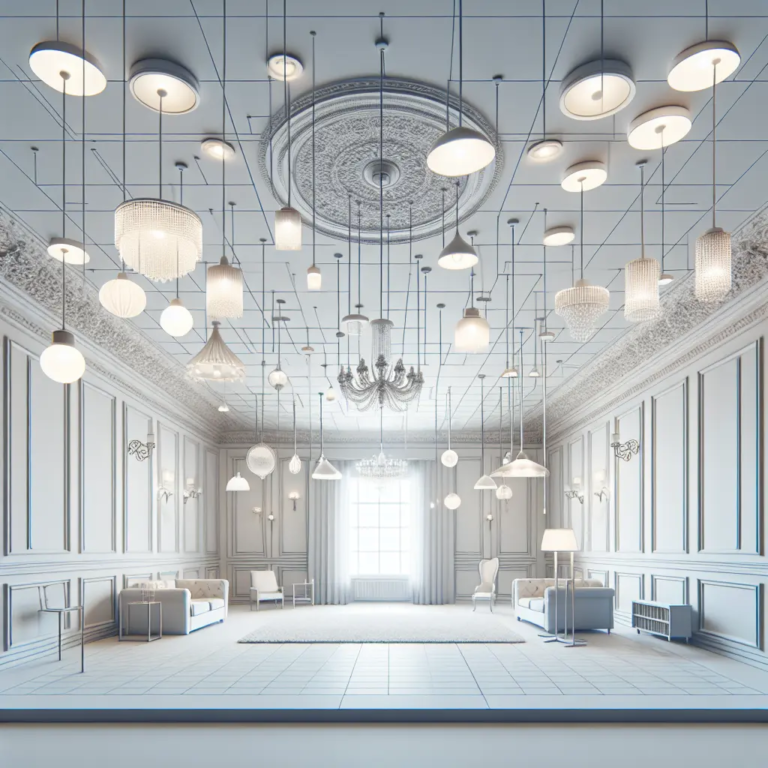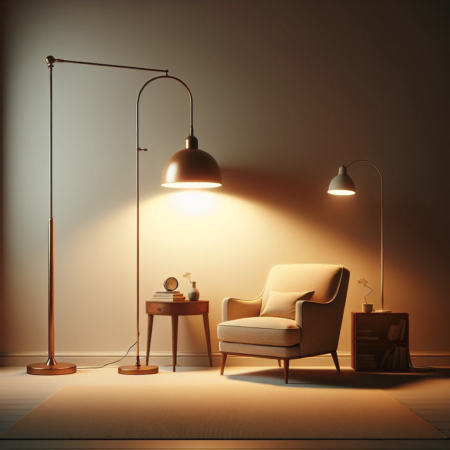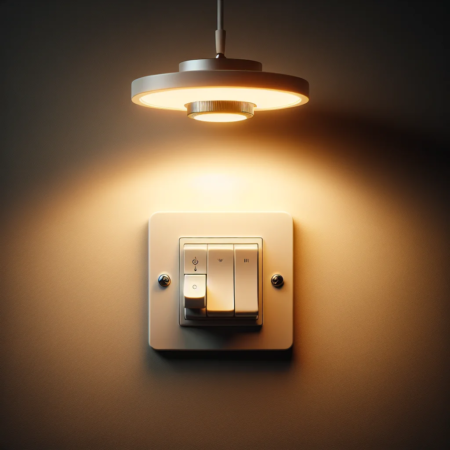Contents
Factors to Consider for Determining the Number of Ceiling Lights
The number of ceiling lights for a room is determined by the ceiling height, room size, and light fixture type. It is essential to consider whether the ceiling is tall or low, as taller ceilings require more lighting and fixtures should be placed 2.5 feet apart for every foot of ceiling height. The size of the room also plays a crucial role, with a general guideline of 1 light fixture per 25 square feet to ensure even distribution of light. Additionally, different types of light fixtures are suited for different room sizes and purposes, such as recessed lighting for general illumination in larger areas and chandeliers or pendant lights for focused light in specific areas.
Ceiling height
When determining the number of ceiling lights for a room, it’s crucial to consider the ceiling height. Taller ceilings require more lighting to adequately illuminate the space. As a rule of thumb, for every foot of ceiling height, multiply by 2.5 to determine the distance between each light fixture. For example, a room with a 10-foot ceiling would ideally have light fixtures placed 25 feet apart. Additionally, light fixtures should be positioned at least 7 feet above the floor to ensure proper illumination without creating glare or shadows.
Room size
The size of the room also plays a significant role in determining the number of ceiling lights needed. Larger rooms generally require more light sources to illuminate the entire space effectively. A helpful approach is to calculate the square footage of the room and use a general guideline of 1 light fixture per 25 square feet. This ensures even distribution of light and prevents any dark or poorly lit areas within the room.
Light fixture type
The type of light fixture is another crucial factor when determining the number of ceiling lights for a room. Various lighting fixture types suit different room sizes and purposes. For example, recessed lighting is ideal for providing general illumination in larger areas, while chandeliers or pendant lights work well for adding focused light in specific areas such as dining tables or kitchen islands. It’s essential to consider the room’s layout and purpose to choose the most suitable light fixture type that complements the space’s design and lighting needs.
Question: How Many Ceiling Lights per Room?
For a well-lit room, it’s crucial to consider the lumens per square foot required in different spaces within a house. Here’s a breakdown of the recommended lumens based on room type:
Living Room:
In a living room, aiming for 1,000 to 2,000 lumens creates a warm and inviting ambiance, ensuring adequate lighting for social gatherings and relaxation.
Bedroom:
Similarly, 1,000 to 2,000 lumens in the bedroom promotes a cozy atmosphere, suitable for reading, dressing, and unwinding after a long day.
Hallway:
For hallways, 500 to 1,000 lumens suffices to illuminate the passage and maintain a safe environment for navigating through the home.
It is important to note that these figures serve as general guidelines and can be adjusted based on the specific design and layout of each room.
Impact of Varying Ceiling Heights:
Research conducted by the Lighting Research Center indicates that elevated ceiling heights demand higher light levels to effectively brighten the space. Taller ceilings often necessitate additional lighting fixtures to evenly distribute light and create an inviting atmosphere.
Calculating the Amount of Light Needed:
Interior features and room purposes impact the required amount of light. Consider these factors when determining the ideal lighting for your home:
-
High Ceilings: Rooms with soaring ceilings typically require increased light to ensure even distribution and avoid stark contrasts between areas.
-
Furniture and Decor: Spaces adorned with ample furniture and decorative items benefit from enhanced lighting to prevent shadows and create a well-illuminated environment.
Determining Light Intensity by Room Type:
Foot-candles, representing the brightness of light one foot away from its source, play a key role in gauging the appropriate light levels based on room purpose:
Sitting Room or Bedroom:
A sitting room or bedroom generally necessitates approximately 10 to 20 lumens per square foot, contributing to a well-lit and comfortable setting for various activities.
Bathroom or Kitchen:
In contrast, areas like bathrooms and kitchens typically demand higher lumens per square foot to facilitate tasks like grooming, cooking, and preparing meals, ensuring ample brightness for these functional spaces.
By considering these recommendations and tailoring the lighting to your specific needs, you can create a well-illuminated and comfortable home environment.
Different Types of Ceiling Lights
Chandeliers, pendant lights, and flush mount lights are three different types of ceiling lights. Chandeliers are ornate with various styles and serve as a stunning lighting centerpiece for any room. Pendant lights are single light sources with a suspended installation, providing a more streamlined and customizable option compared to chandeliers. Flush mount lights sit directly against the ceiling, while semi-flush mount lights have a slight gap, offering a balance between close-to-ceiling installation and a more prominent visual presence.
Chandeliers
When it comes to illuminating your space with glamour and grandeur, chandeliers are the way to go. These ornate light fixtures come in various styles, including traditional, modern, transitional, glam, coastal, and rustic. The Ellis 4 Light Metal Dimmable Lantern Chandelier and the Sanibel 5-light chandelier are popular options that cater to diverse design preferences. Whether you’re aiming for a traditional, opulent look or a contemporary, sleek appearance, chandeliers provide a stunning lighting centerpiece for any room.
Pendant lights
Pendant lights, often likened to chandeliers, are distinctive for their single light source and suspended installation. While they share similarities with chandeliers, pendant lights present a more streamlined and customizable option. They come in various shapes, colors, and styles, allowing homeowners to select the perfect pendant light to complement their space. Understanding the distinction between chandeliers and pendant lights is crucial in selecting the ideal ceiling lighting solution for any room.
Flush and semi-flush mount lights
The difference between flush mount lights and semi-flush mount lights lies in their installation and visual impact. Flush mount lights sit directly against the ceiling, creating a seamless and flat appearance that suits spaces with low ceilings. In contrast, semi-flush mount lights are installed with a slight gap between the fixture and the ceiling, offering a balance between close-to-ceiling installation and a more prominent visual presence. These lights are essential for providing ambient illumination in areas where space is a limiting factor.
Placement of Ceiling Lights
When it comes to the placement of ceiling lights, it’s essential to consider the different types of lighting and their specific purposes within a room. Proper placement can enhance the functionality and ambiance of the space.
Here’s a breakdown of the three main types of ceiling lighting and their ideal placement:
General Lighting
General lighting serves as the primary source of illumination in a room, providing overall visibility. For an average-sized room, such as a bedroom or living room, a good starting point is to aim for a fixture every 8-10 feet. This ensures even distribution of light and minimizes shadows. To calculate the number of ceiling lights needed, divide the square footage of the room by 1.5 to determine the total wattage required, then select fixtures with the appropriate wattage to achieve the desired brightness.
Task Lighting
Task lighting is tailored to specific activities, such as reading, cooking, or crafting. In areas where focused lighting is crucial, such as above a kitchen island or a work desk, individual pendant lights or adjustable recessed lights can be strategically placed to provide adequate illumination without causing glare. For example, above a kitchen island, the lights should be positioned directly above the work surface to minimize shadows and enhance visibility.
Accent Lighting
Accent lighting is employed to highlight architectural features, artwork, or decorative elements, adding depth and visual interest to a room. When incorporating accent lighting, it’s essential to consider the dimension and layout of the space. For instance, track lighting or wall-mounted fixtures can be used to showcase art pieces or architectural details. Additionally, the use of dimmers allows for the adjustment of light intensity, enabling the creation of various moods and focal points.
Understanding the distinct roles of general, task, and accent lighting is fundamental to achieving an optimal lighting layout. By strategically placing ceiling lights based on the specific function they serve, one can create a well-lit, visually appealing, and adaptable living environment.





